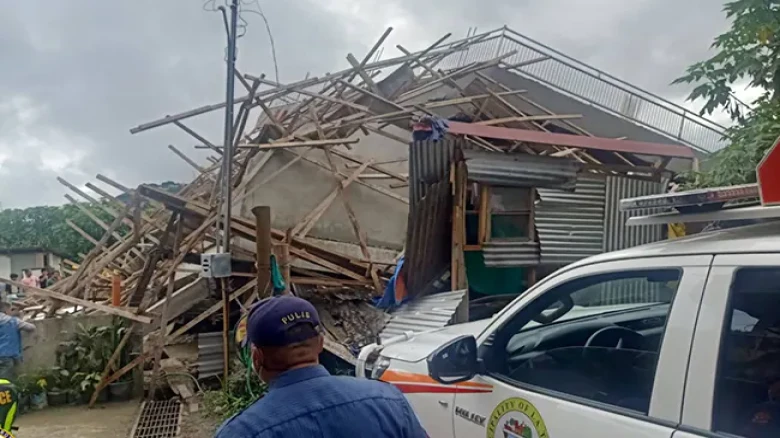National

Roads were blocked by landslides, hundreds of buildings were damaged or destroyed, and power was lost in the impacted districts.
Digital
Desk: On Thursday, while President Ferdinand Marcos Jr. visited
the devastation in the area, locals said anxious citizens slept outside after
hundreds of tremors shook the earthquake-stricken northern Philippines.
Authorities reported that a 7.0-magnitude
earthquake that struck the sparsely populated province of Abra on Wednesday
morning left five people dead and more than 150 injured.
The strong earthquake sent shockwaves through
the mountainous region, toppling buildings, starting landslides, and shaking
high-rise towers in Manila, the country's capital, hundreds of kilometers
distant.
Reggi
Tolentino, a restaurant owner in Bangued, the provincial capital of Abra,
stated that aftershocks have been occurring roughly every 20 minutes, 15
minutes since yesterday.
"Many
slept outside last night, almost every family."
Modular tents have been provided for some families to use
as a home. Marcos Jr. has asked residents to hold off on returning to their
homes until they have been inspected.
Roads were blocked by landslides, hundreds of
buildings were damaged or destroyed, and power was lost in the impacted
districts.
However, total damage had been "quite
modest" in Abra, which had seen the full force of the earthquake, police
commander Colonel Maly Cula told AFP.
Despite
the fact that many people are lingering in the streets due to the aftershocks,
"we don't have a lot of people at evacuation sites," according to
Cula.
"Abra
is back to normal."
Marcos Jr., who assumed office last month, visited in
Bangued on Thursday to survey the damage and talk with government, military,
and disaster officials about the response effort.
Since the earthquake, more than 800
aftershocks have been registered, 24 of which were strong enough to be felt,
according to the local seismological organisation.
Renato
Solidum, head of the Philippine Institute of Volcanology and Seismology, stated
at a briefing presided over by Marcos Jr. that aftershocks were anticipated to
last for "many weeks."There would be "a lot" in the first
three days, then "hopefully it will decline afterwards", he said.
Tourism operators hit
Ancient structures constructed during the Spanish
colonial era at Vigan City, a UNESCO World Heritage site and popular tourist
destination in the province of Ilocos Sur, were harmed.
The Bantay Bell Tower, which partially
collapsed, was among the 460 buildings in the province that were impacted,
according to Governor Jeremias Singson to TV station Teleradyo.
Singson claimed that "our tourism
industry and small business owners were significantly harmed."
The president's elder sister, Senator Imee
Marcos, described the devastation to the city's historic churches as
"overwhelming" after visiting Vigan on Thursday.
Due
to its location on the Pacific "Ring of Fire," a region of extremely
active seismic activity that spans from Japan through Southeast Asia and
throughout the Pacific basin, the Philippines is frequently shaken by earthquakes.
The most populous island in the archipelago,
Luzon, received the brunt of Wednesday's earthquake, one of the strongest to be
recorded in the Philippines in recent memory.
More than 200 people were killed and
landslides were sparked by an earthquake of magnitude 7.1 that rocked Bohol
Island in the central Philippines in October 2013.
In the Philippines, where Catholicism
originated, old churches suffered severe damage. Tens of thousands of homes
were damaged, and about 400,000 people had to be relocated.
A
"ground rupture" caused by the strong earthquake raised a section of
earth by around three metres, changing the island's topography and forming a
rock wall above the epicentre.
In the northern Philippines in 1990, a
7.8-magnitude earthquake caused a ground rupture that was almost 100 kilometres
long.
More
than 1,200 people were thought to have died, and Manila's buildings suffered
significant damage.
Leave A Comment